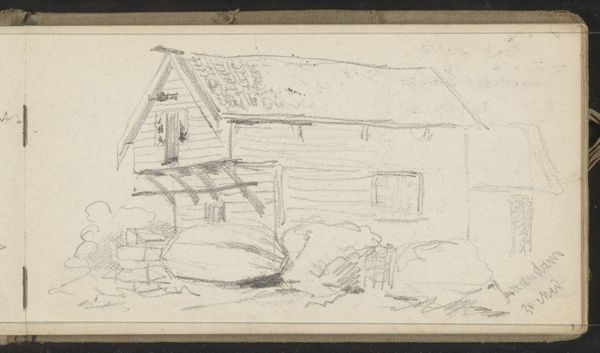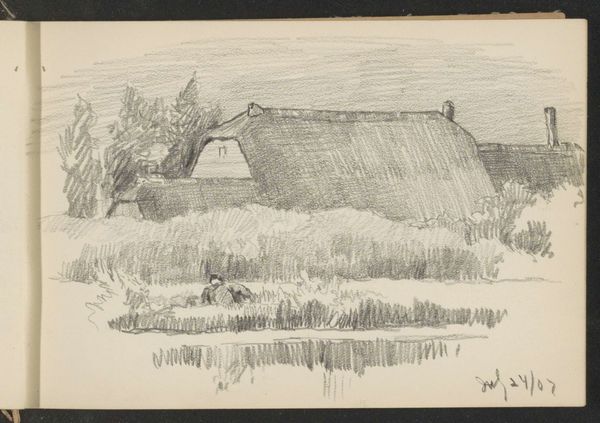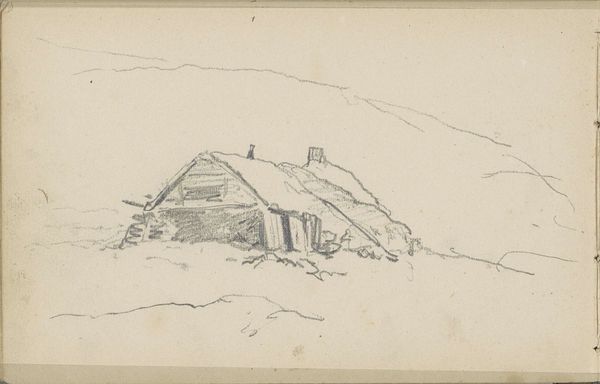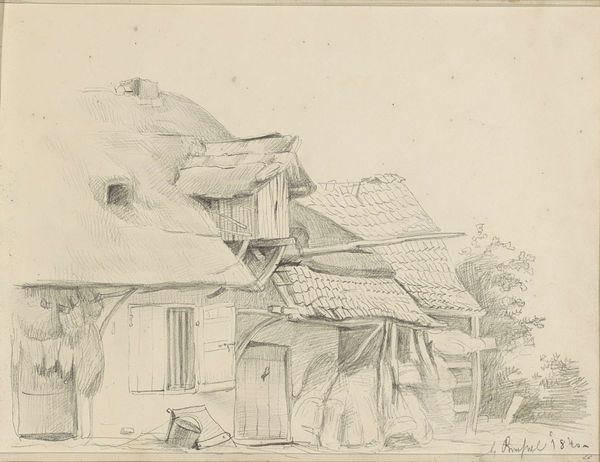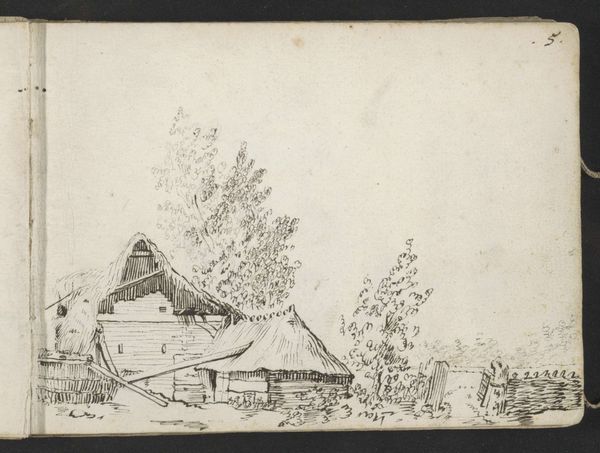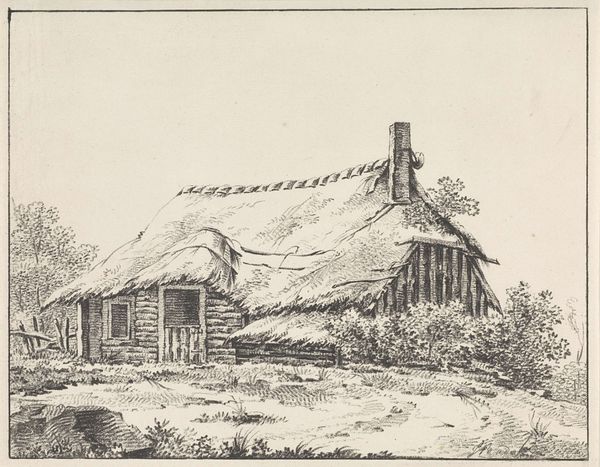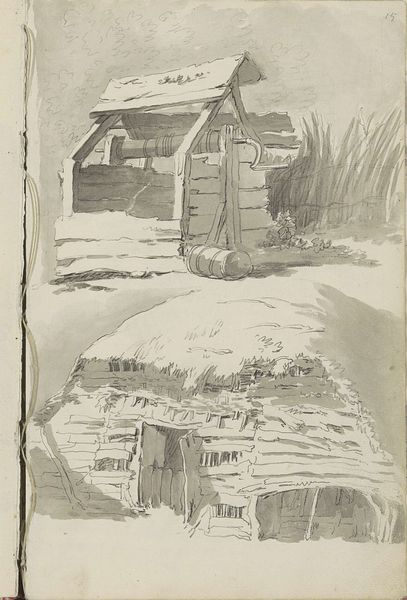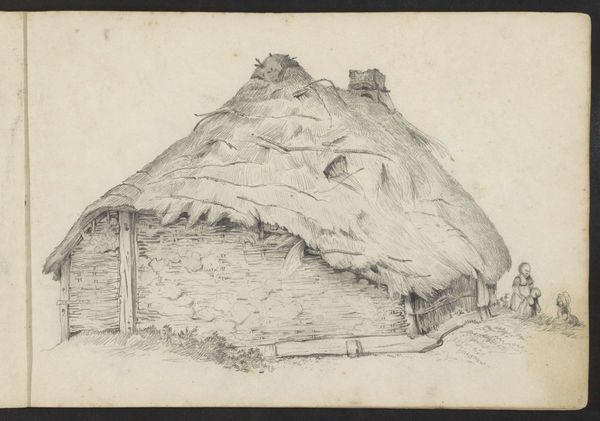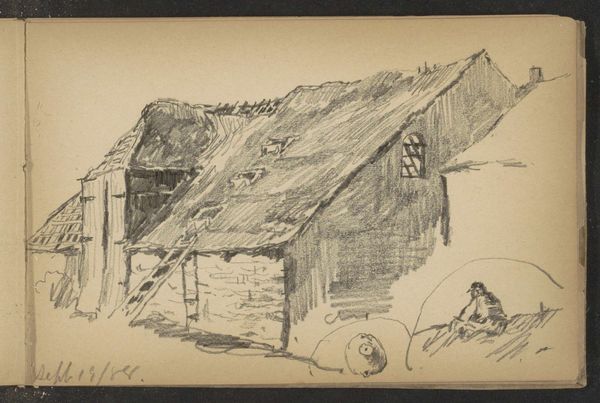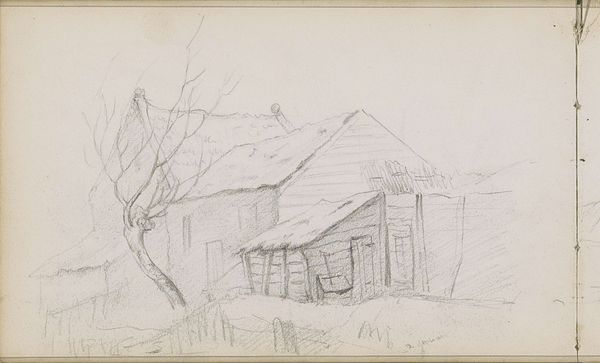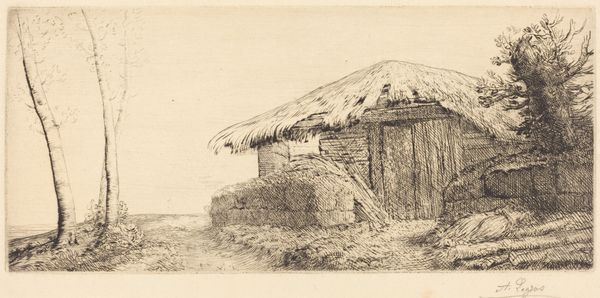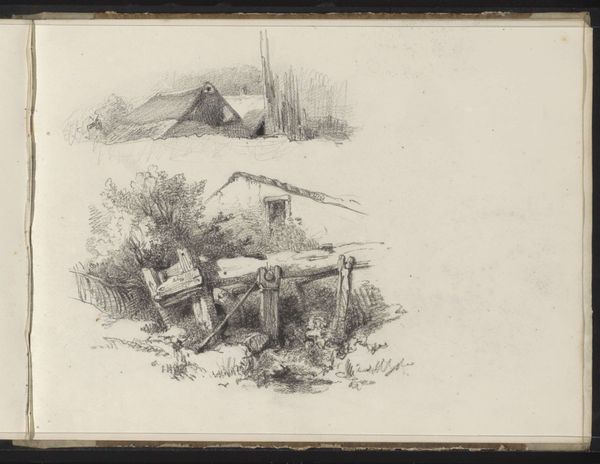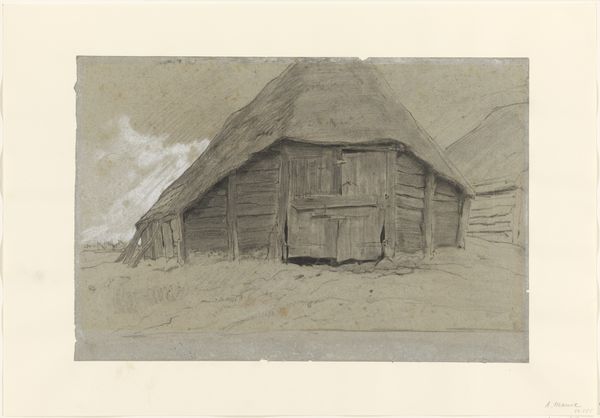
drawing, paper, pencil
#
drawing
#
landscape
#
paper
#
pencil
#
realism
Copyright: Rijks Museum: Open Domain
Curator: Welcome, everyone. We're standing before Johannes Tavenraat's "Houten schuur met een rieten dak," a pencil drawing on paper, dating back to 1864-1868. Editor: The immediate impression is of quiet decay, isn’t it? The lines are so delicate, yet they depict a building in visible decline, somehow it is very tranquil though. Curator: Absolutely. It’s interesting to consider the rise of Realism and the social implications here. Artists started turning their attention to the everyday, depicting scenes and structures—like this humble shed—that had previously been overlooked. This shift mirrored a broader democratization of art, and even rural life was now considered suitable for serious artistic attention. Editor: You’re right, the common structures taking on new importance. But I see echoes of the romanticization of rural simplicity too, even in the detail in the decaying structure. The thatched roof, for instance, isn't just a roof; it’s a symbol of rustic tradition, even nostalgia perhaps, as industry encroached on the Dutch landscape. Even the choice of depicting an older or damaged structure rather than a newer or cared for structure can carry a lot of historical weight. Curator: It definitely exists at the intersection of those perspectives. This drawing presents a straightforward record of rural architecture, but within that, one cannot separate the idealized views from the day. Tavenraat captures the essence of that building using a relatively simple medium, too. He isn't trying to overly romanticize anything, instead creating an enduring portrait that stands as a social record and representation. Editor: Enduring, yes, precisely. These ordinary sheds become more than structures of simple utility. Over time, the depiction transforms into a carrier for cultural memories, speaking to a longing for a vanishing way of life, I would venture to say. It's more about memory than just historical record-keeping, for me. Curator: Agreed, memory shapes how we view and present such scenes, and also informs the reception that those drawings receive from future audiences. In many ways this is also what gives them cultural weight and significance. Editor: What started as a realistic rendition turns into a subtle commentary on change and continuity. A simple scene that can also provide insight into history. Curator: Thank you. And I thank you for sharing your unique insight with us today.
Comments
No comments
Be the first to comment and join the conversation on the ultimate creative platform.
